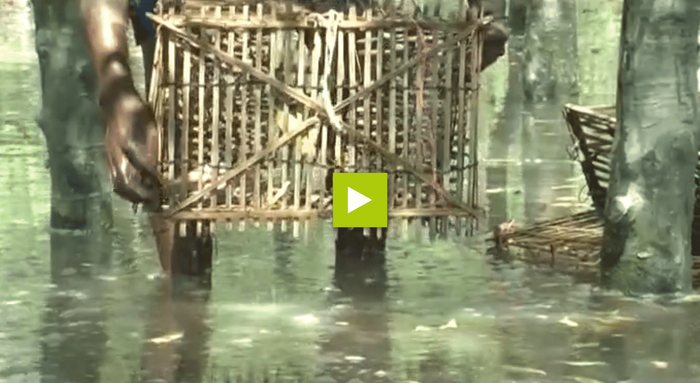Crabs are sold to earn money locally and internationally but harvesting too soft crabs often get rejected by buyers because too soft crabs get damaged during transportation.
Rejected crabs are usually bought and hardened in floating cages . Crabs change their shells as they grow and become soft, it takes 10-15 days for the shell to be hard again to be sold for a profit.
Cage anchoring
A bamboo cage with separate sections or pockets is selected for each crab to prevent fighting and damaging of their shells. 2 to 4 bamboo poles are pushed firmly into the bottom of the channel and a part of each pole is left above water. A plastic containers or airtight drums are used to keep the cage afloat. Tie one container to each corner at the bottom of the cage then tie the cage to the poles so that it floats up and down with the tide. Each of the rejected crab is put one at each pocket of the cage. Crabs are put in the cage at sundown.
Feeding crabs
Give each crab half a tiny piece of fish per day, clean the fish first then cut into small pieces before feeding them to crabs. Feeding them a lot of fish or unclean fish will make the crabs sick as well as polluting the water since they eat a lot of food.
Symptoms and precautions
A sick crab will not eat food and exhibits no movement. Dispose sick crabs to avoid infecting the healthy ones. Crabs are big enough to sell when the brain forms, you can see the brain by holding up the crab in front of the sun or a lamp. Crabs are available for 9 months of the year.
To store cages, the bamboo cages are dried for three days before putting new crabs into the cages to prevent sickness. During down season, the cages are dried and hung safely for the next season.




















4 Responses
The videos are interesting and easy to read.
Great video
very informative and insightful.
this is very informative and easy to understand